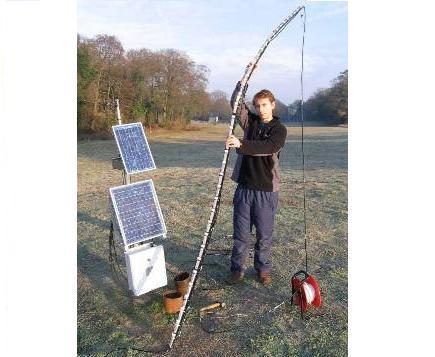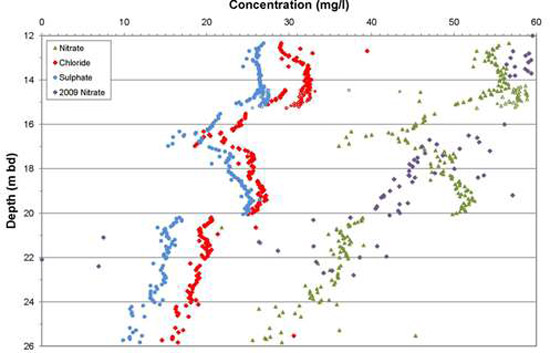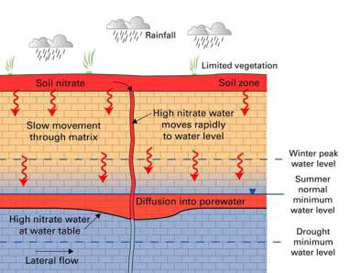Nitrate fluctuations in groundwater
Many time-series data of nitrate concentrations in groundwater show within-year fluctuations. These fluctuations are different in different locations.
Where suitable continuous groundwater level records are available nearby, a more or less close relationship between groundwater levels and nitrate concentrations can often be observed.
Higher nitrate concentrations are typically associated with higher groundwater level.
This project aims to identify what links these within-year concentration fluctuations to changes in water levels.
Mechanisms which may cause within-year nitrate fluctuations
Four conceptual models were prepared to represent scenarios where chalk recharge is taking place by only one mechanism.
These mechanisms were:
- winter piston flow through the unsaturated zone matrix
- winter bypass flow from the base of the soil bringing high nitrate water directly to the water table
- water table rise from water entering elsewhere in the catchment flushing out pore water
- change in flow path giving access to a greater percentage of shallow high nitrate water
These mechanisms were evaluated in a simple way to determine the relationship between nitrate concentration at the water table and water level.
It was concluded that all mechanisms except flushing by a rising water table would be likely to result in the more or less simultaneous rising of the water level and arrival of nitrate.
Field measurements to test the conceptual models

We have used a hanging sampler to test some of these mechanisms at a site on the Chalk in Hampshire. This comprises a series of small plastic bottles each containing a plastic ball which seals the bottle as it fills.
The sampler is hung above the water table during a low water level period, so that the bottles fill successively as the water level rises. The bottles are spaced a few centimetres apart.
The interim results highlight a number of features, e.g. at 20 m below ground where different quality water is observed entering the borehole.

Publications
This work was reported in Stuart et al., 2009. Nitrate fluctuations in groundwater: review of potential mechanisms and application to case studies. British Geological Survey, 47pp. (OR/08/046)
Contact
Contact Dan Lapworth for further information







